Genus species:
Branta canadensis
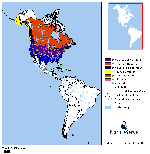
Enlarge Map
External Sites:
Cornell
USGS
Image Search
Note white mark on Cheek.
Larger than local Ducks.
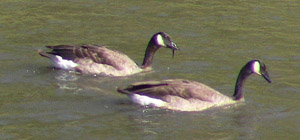
Rinconada, July 15, 2012
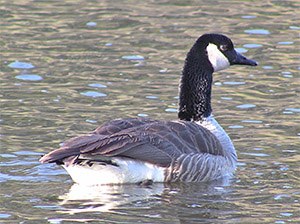
Embudo, May 21, 2014 Enlarge
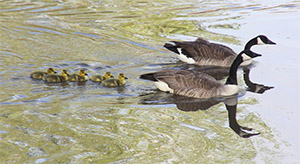
Pilar, May 8, 2015 Enlarge
Anas platyrhynchos
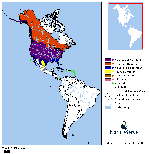
Enlarge Map
External Sites:
Cornell
USGS
Image Search
and
Male (below).
Male plumage distinctive.

Rinconada
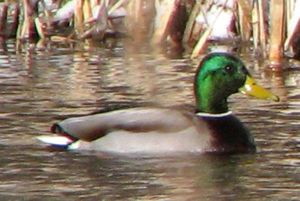
Rinconada

Rio Grande-Taos County Line, June 9, 2014 Enlarge
Streptopelia decaocto
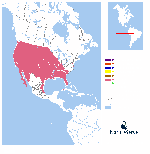
Enlarge Map
External Sites:
Cornell
USGS
Image Search
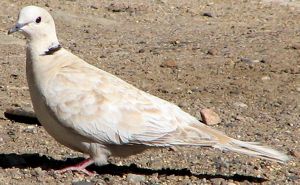
Peñasco
Archilochus alexandri
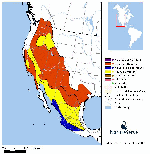
Enlarge Map
External Sites:
Cornell
USGS
Image Search
One of only two hummingbirds that regularly breed here.
In the right light, male's throat shows purple below, black above.
Often appears more slender and vertical than the Broad-tailed Hummingbird.
Male is pictured. Female has plain throat.
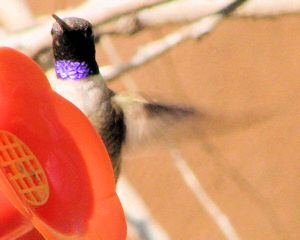
El Bosque
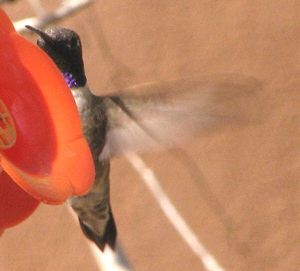
El Bosque
Selasphorus platycercus
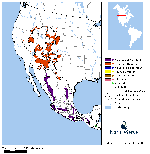
Enlarge Map
External Sites:
Cornell
USGS
Image Search
One of only two hummingbirds that regularly breed here.
In the right light, male's throat is red.
Often appears plumper and rounder than the Black-chinned Hummingbird.
Male's wing make a distinctive, loud buzz in flight.
Male is pictured. Female has plain throat.
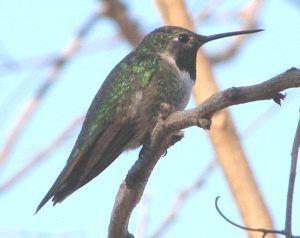
Dixon
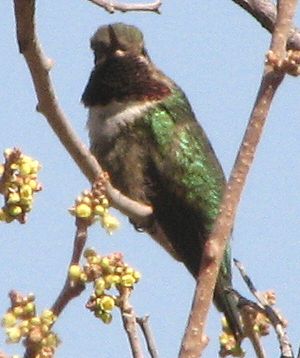
Dixon
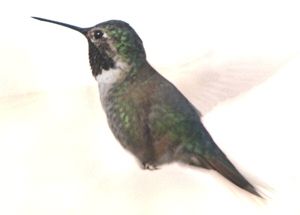
Dixon
Contopus sordidulus
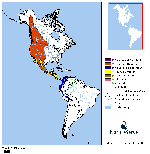
Enlarge Map
External Sites:
Cornell
USGS
Image Search
A fairly plain flycatcher that says its name: a buzzy "pee-wee".
In some postures can look like an Empidonax genus flycatcher, without the characteristic Empidonax white eye-ring.
Usually perches in trees or posts at mid to low levels.
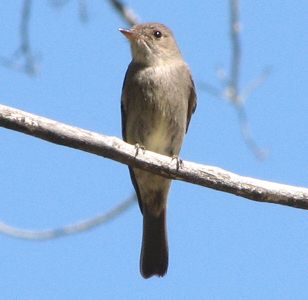
El Bosque
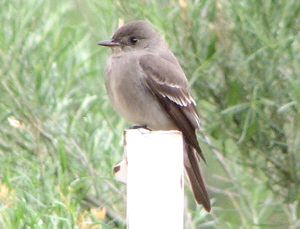
Bosque del Apache, NM
Sayornis nigricans
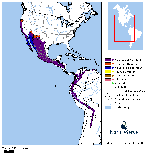
Enlarge Map
External Sites:
Cornell
USGS
Image Search
Usually seen on low branches overhanging the river, from which it "hawks" insects.
At times perches at mid-level in trees near the river, making its sharp, quick two-note call.
Distinctive inverted "v" apparent where the white belly meets the dark breast.
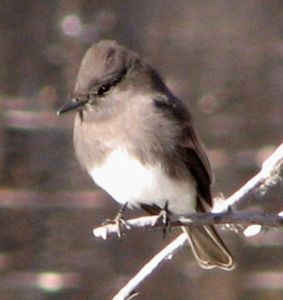
Cachanillas (Velarde)
Sayornis saya
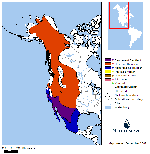
Enlarge Map
External Sites:
Cornell
USGS
Image Search
Usually seen on posts or single stalk plants in agricutural areas "hawking" insects.
It's call is a slow, plaintive, downward slurred "pee-ee". At close range, may hear "pit,pee-ee".
Distinctive peach-colored belly.
This species regularly builds nests under people's portales.
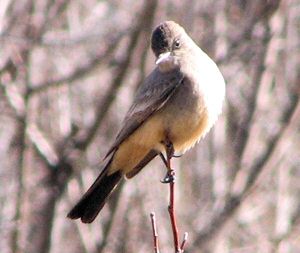
Rinconada
Aphelocoma californica
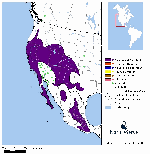
Enlarge Map
External Sites:
Cornell
USGS
Image Search
Note white throat and faint white eyebrow.
Also brownish-gray back.
Distinguished from the Pinyon Jay by longer tail and solitary behavior.
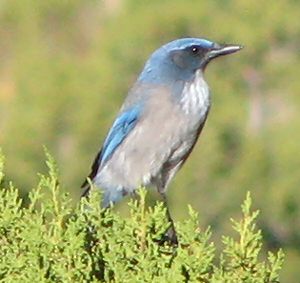
Arroyo la Mina
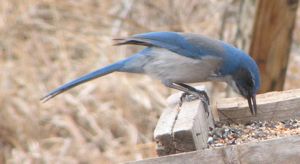
Cañoncito
Pica hudsonia
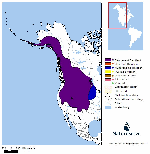
Enlarge Map
External Sites:
Cornell
USGS
Image Search
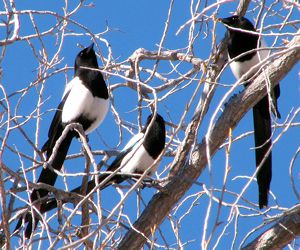
El Bosque
Corvus brachyrhynchos
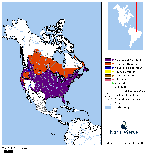
Enlarge Map
External Sites:
Cornell
USGS
Image Search
By sound, the crow's "caw" is familiar.
In flight, the crow's tail is often square or rounded.
Crows are very social and often appear in noisy groups.
Bill smaller and thinner than that of the Raven.
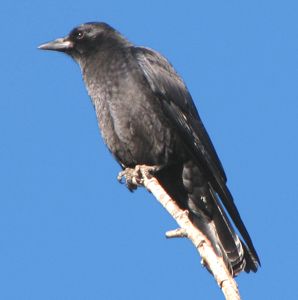
El Bosque
Tachycineta thalassina
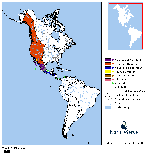
Enlarge Map
External Sites:
Cornell
USGS
Image Search
All white below, with white wrapping up the sides of the rump as shown in the upper individual in the lower photo.
In right light, the back reveals brilliant violet and green colors.
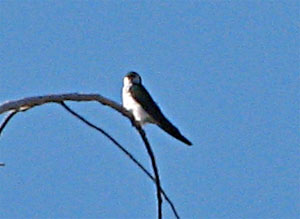
El Bosque
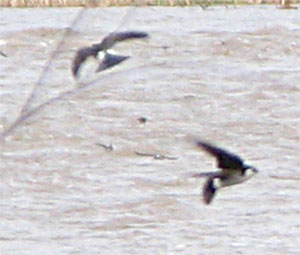
Rinconada
Stelgidopteryx serripennis
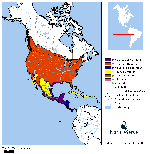
Enlarge Map
External Sites:
Cornell
USGS
Image Search
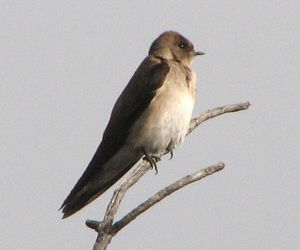
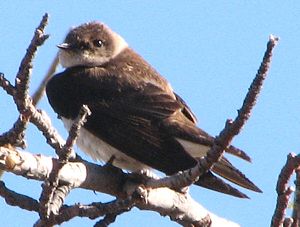
Petrochelidon pyrrhonota
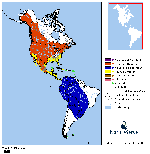
Enlarge Map
External Sites:
Cornell
USGS
Image Search
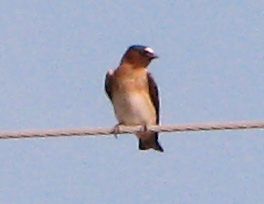
Cañoncito
Thryomanes bewickii
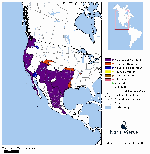
Enlarge Map
External Sites:
Cornell
USGS
Image Search
Most often seen at transition from Piñon-Juniper to agricultural or riparian areas.
Song similar to Song Sparrow, but is "buzzier" and consistently ends on a clear trill.
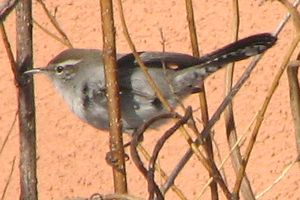
El Bosque
Sialia mexicana
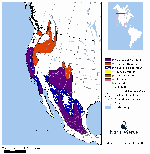
Enlarge Map
External Sites:
Cornell
USGS
Image Search
During breeding season, colors more intense than shown here.
Female (middle photo) has blue in wings, but appears gray from front with a light buffy breast.
Note white eye-ring.
Juvenile on left in lowest photo. Female on right.
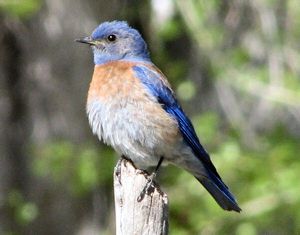
El Bosque
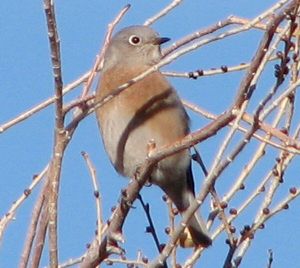
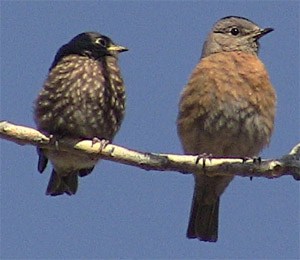
Rinconada Enlarge
Catharus guttatus
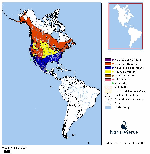
Enlarge Map
External Sites:
Cornell
USGS
Image Search
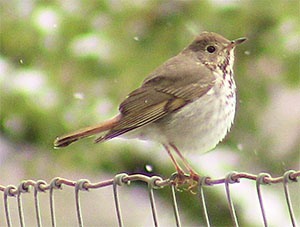
Rinconada Enlarge
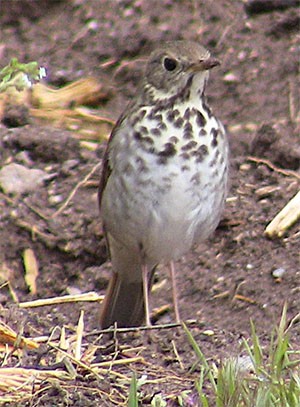
Rinconada Enlarge
Turdus migratorius
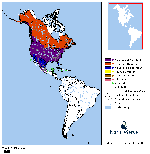
Enlarge Map
External Sites:
Cornell
USGS
Image Search
Note reddish breast, light colored bill and large white split eye-ring.
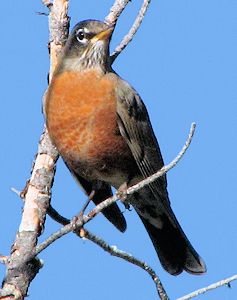
El Bosque
Dendroica petechia
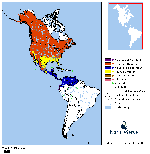
Enlarge Map
External Sites:
Cornell
USGS
Image Search
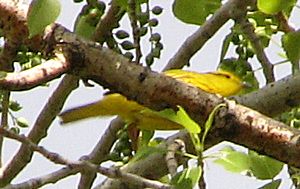
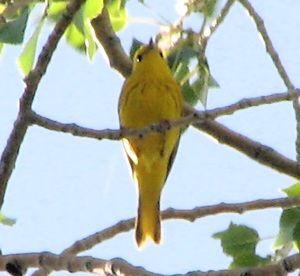
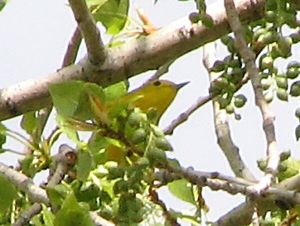
Dendroica coronata
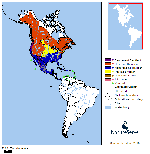
Enlarge Map
External Sites:
Cornell
USGS
Image Search
The first two pictures show breeding plumage.
The last shows typical winter plumage.
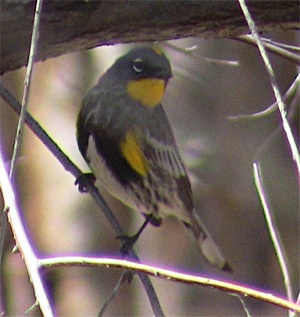
La Junta, April 28, 2013
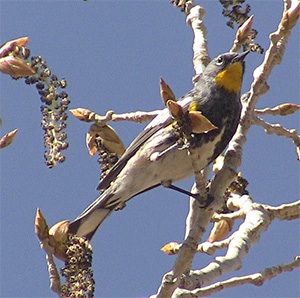
La Junta, April 28, 2013
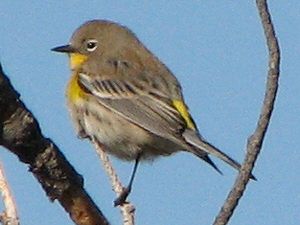
Apodaca
Icteria virens
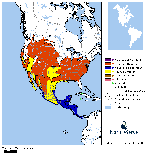
Enlarge Map
External Sites:
Cornell
USGS
Image Search
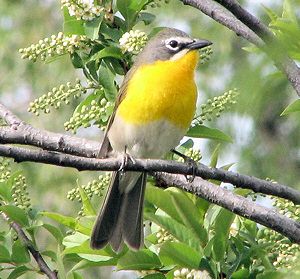
El Bosque
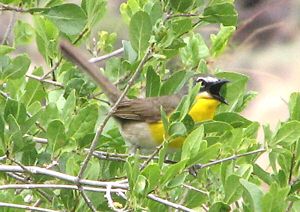
El Bosque
Pipilo maculatus
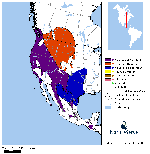
Enlarge Map
External Sites:
Cornell
USGS
Image Search
Occasionally you will see one at the edge of the road or briefly flying from one shrub to the next.
However, they regularly produce a contact call, a low growl.
Hear Contact Call
If you listen for that call and follow it, may be rewarded with a view of this lovely bird with a red eye.
Note white breast with rufous (reddish) flanks.
Lower Photo shows bird in its preferred habitat.
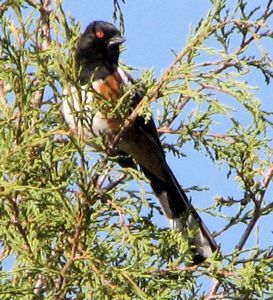
Arroyo la Mina
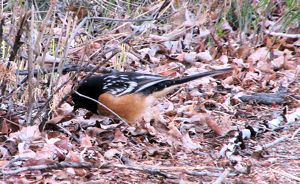
El Bosque Enlarge
Chondestes grammacus
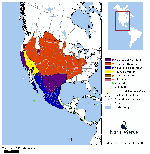
Enlarge Map
External Sites:
Cornell
USGS
Image Search
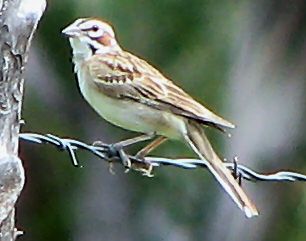
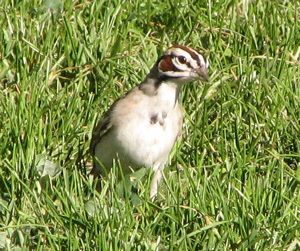
Zonotrichia leucophrys
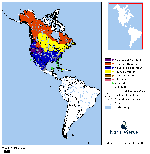
Enlarge Map
External Sites:
Cornell
USGS
Image Search
Juvenile (Lower Photo): Head stripes brown and gray.
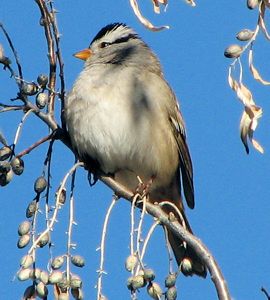
Dixon
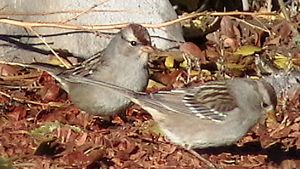
Dixon
Pheucticus melanocephalus
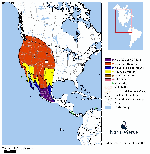
Enlarge Map
External Sites:
Cornell
USGS
Image Search
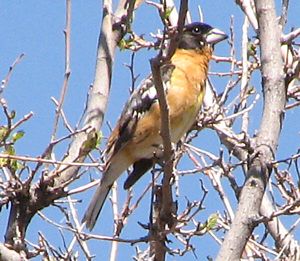
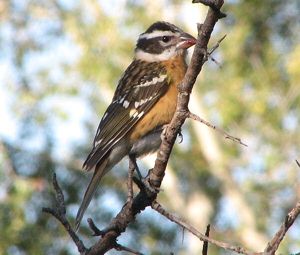
Agelaius phoeniceus
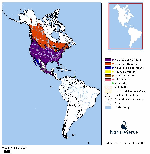
Enlarge Map
External Sites:
Cornell
USGS
Image Search
Male (Lower Picture) is black with red patches on shoulders. Outside of breeding times, the red may be hidden.
Both sexes have medium length, very pointed bill.
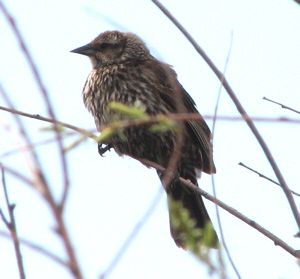
Baca Park, Taos
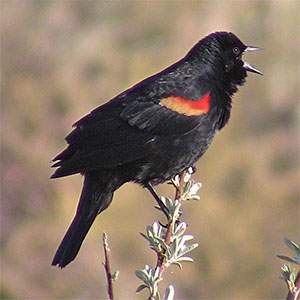
Rinconada Enlarge
Euphagus cyanocephalus
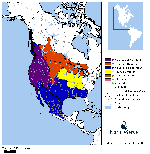
Enlarge Map
External Sites:
Cornell
USGS
Image Search
Quiscalus quiscula
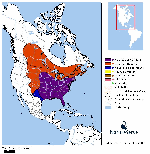
Enlarge Map
External Sites:
Cornell
USGS
Image Search
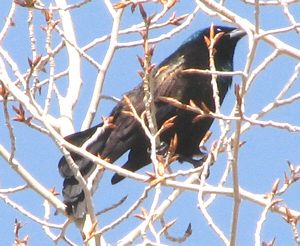
Molothrus ater
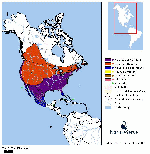
Enlarge Map
External Sites:
Cornell
USGS
Image Search
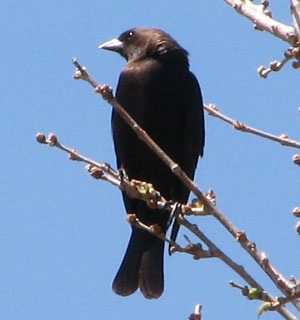
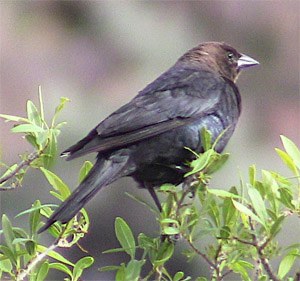
Orilla Verde, May 7, 2014 Enlarge
Icterus bullockii
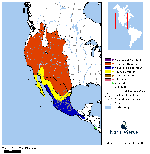
Enlarge Map
External Sites:
Cornell
USGS
Image Search
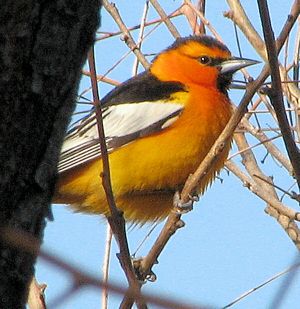
El Bosque
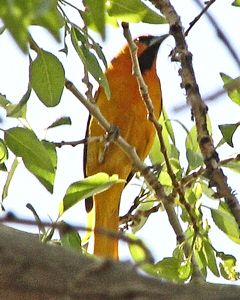
El Bosque
Carpodacus mexicanus
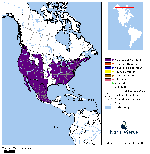
Enlarge Map
External Sites:
Cornell
USGS
Image Search
Male (upper picture) is easily identified by red plumage on head, throat, breast and rump.
Female (lower photo) does not have red.
Both sexes have streaking on breast, belly and flanks.
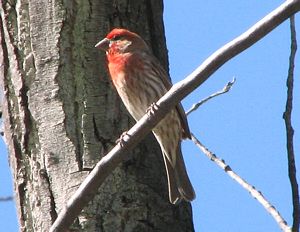
Arroyo La Mina
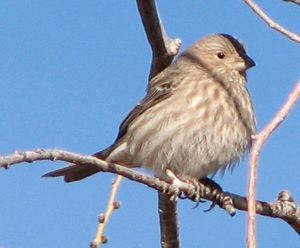
Arroyo La Mina
